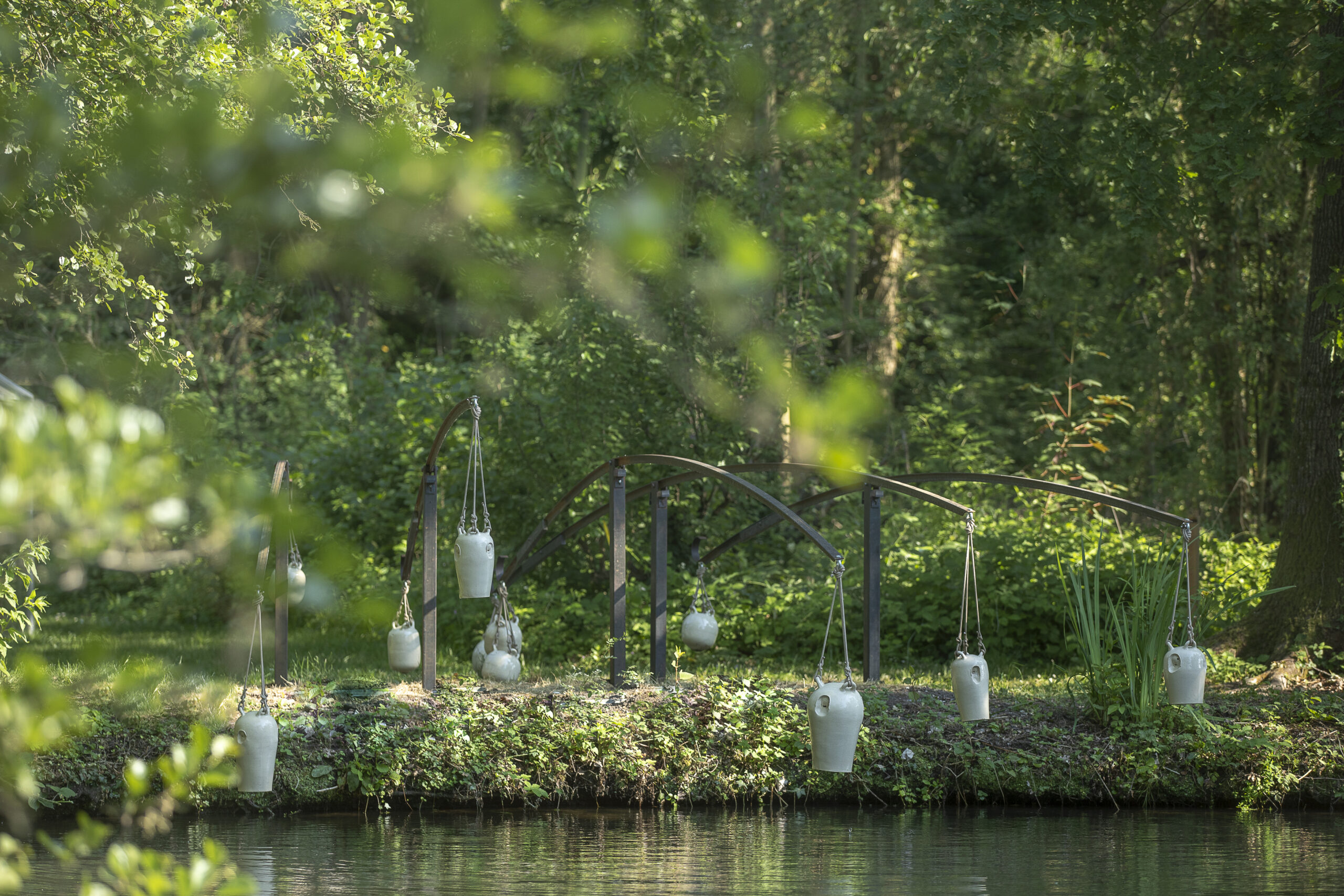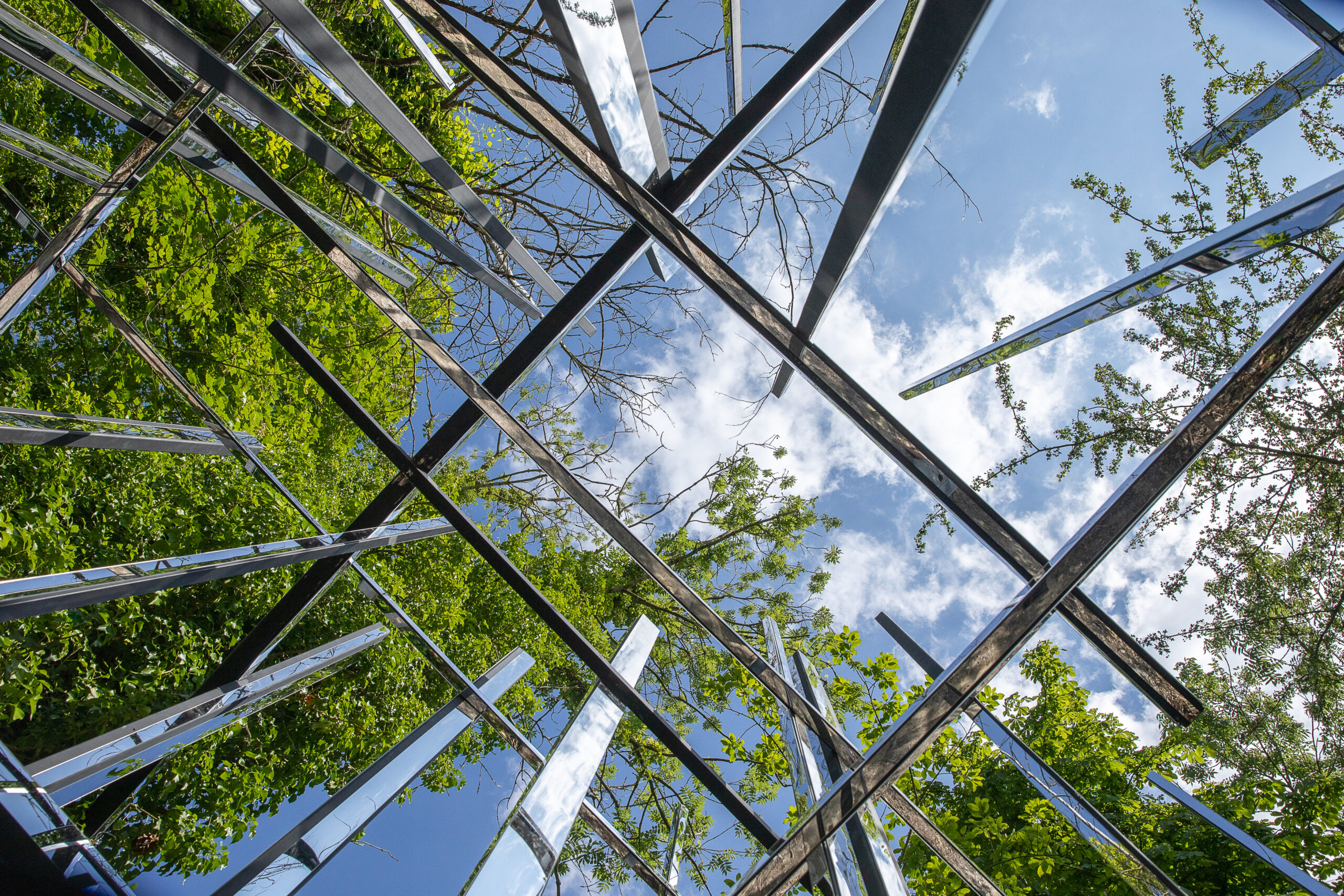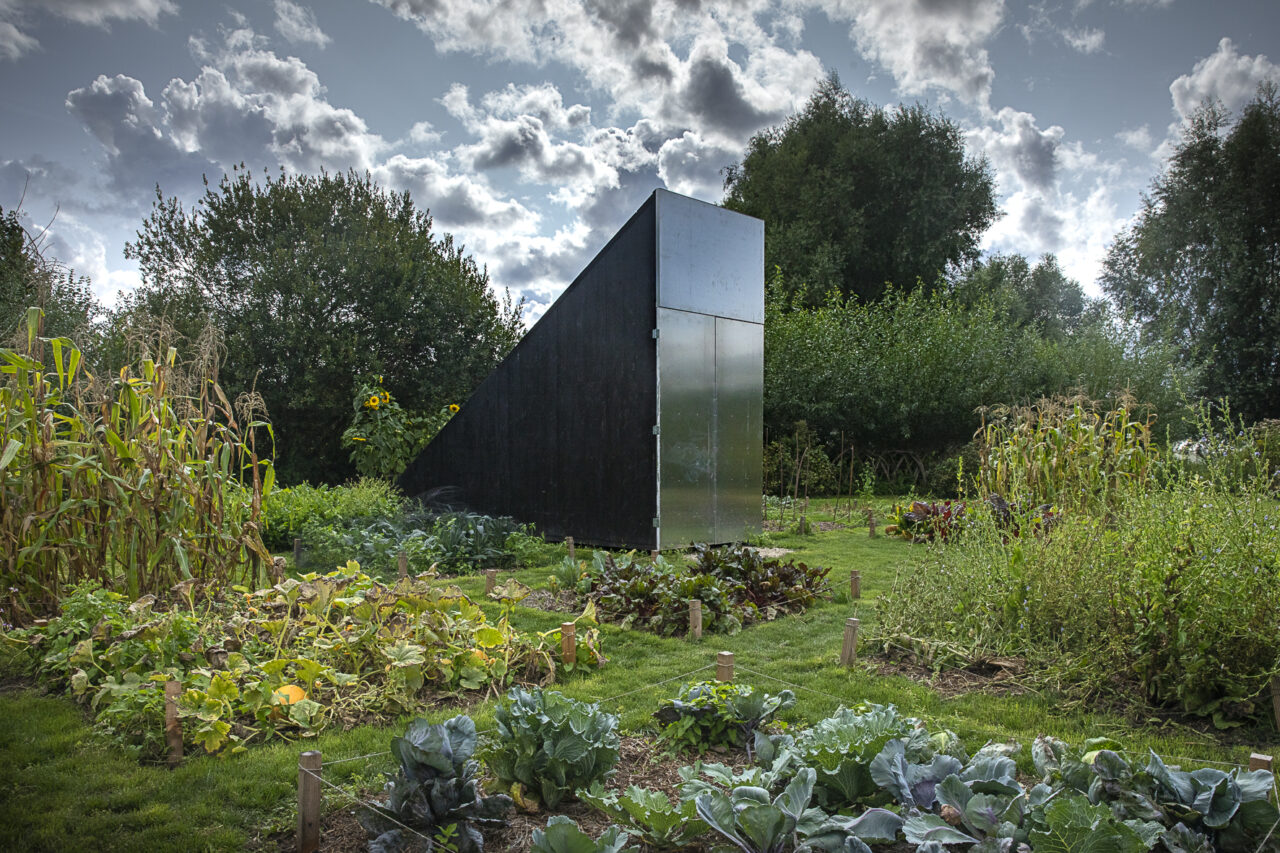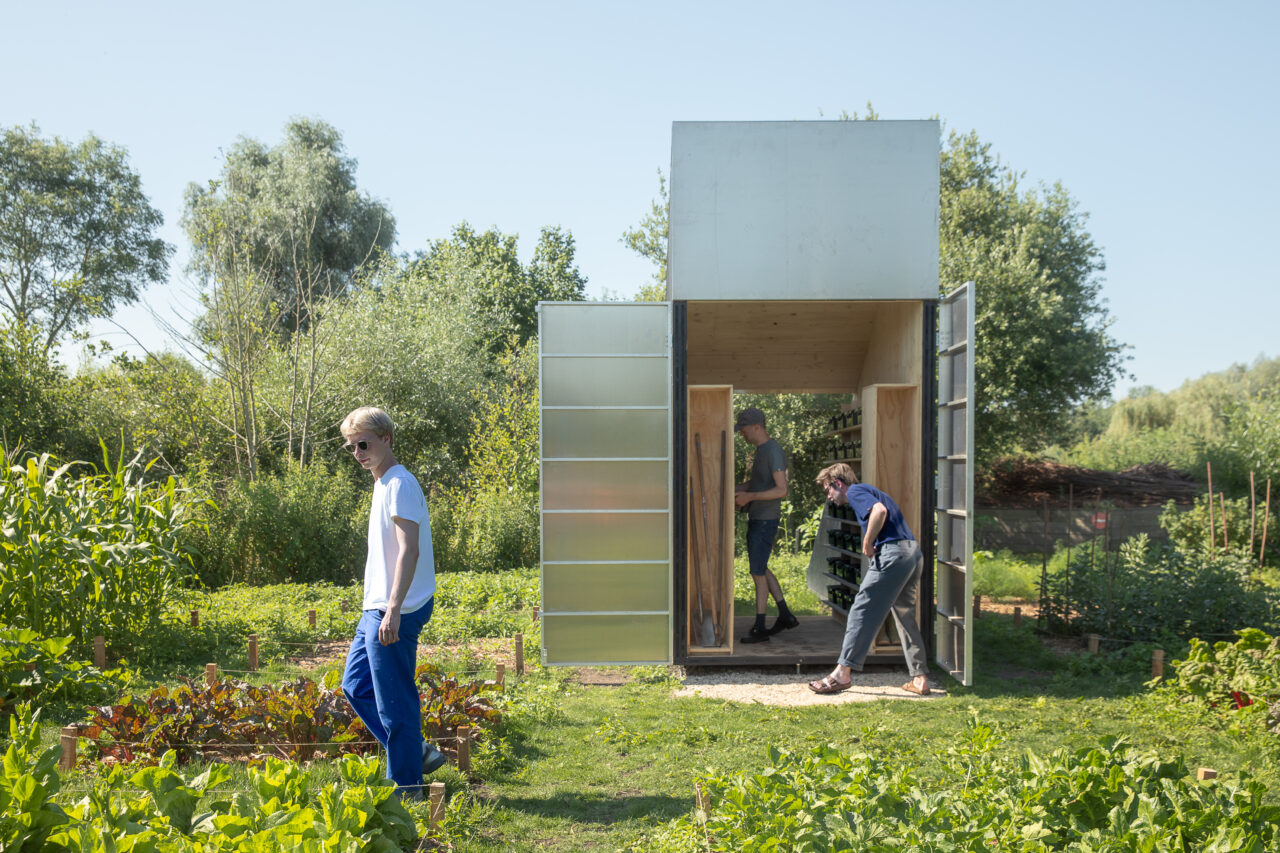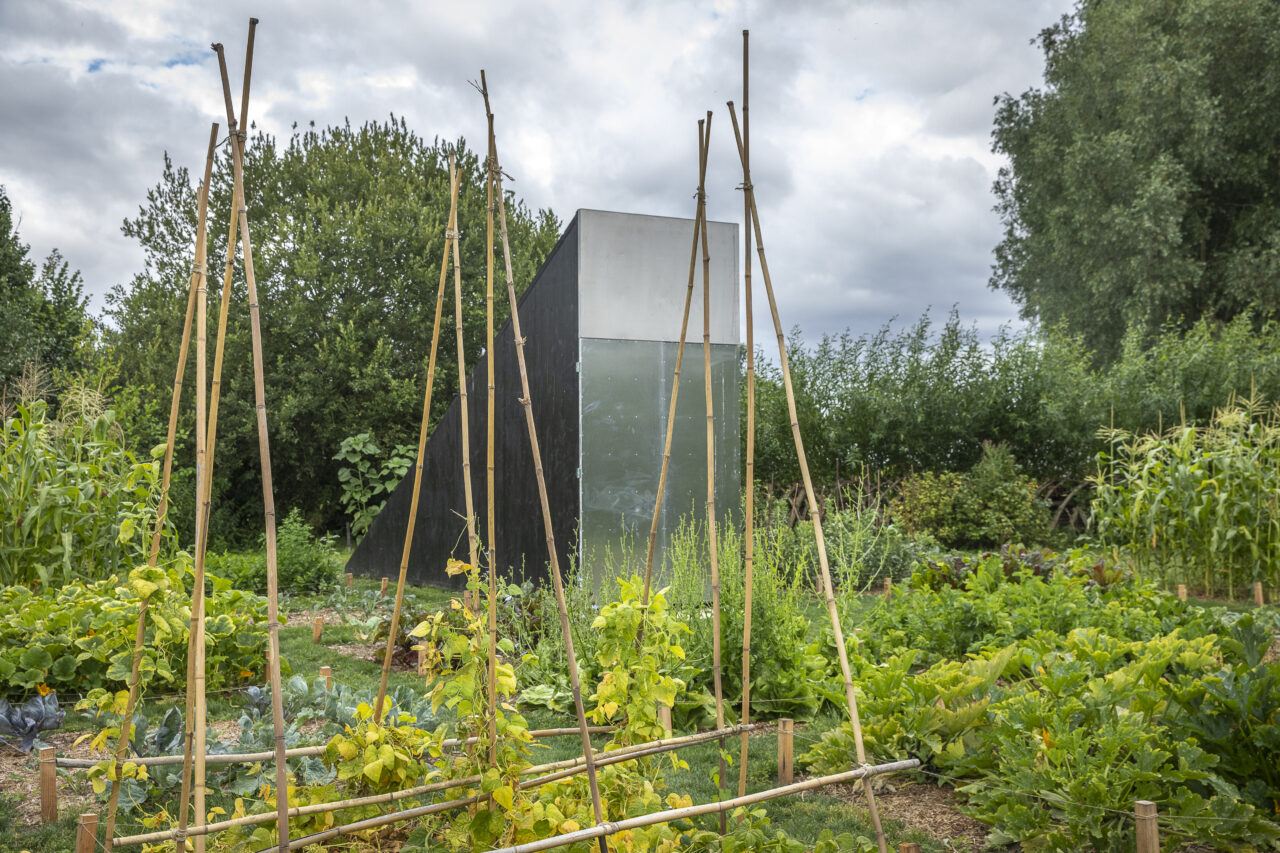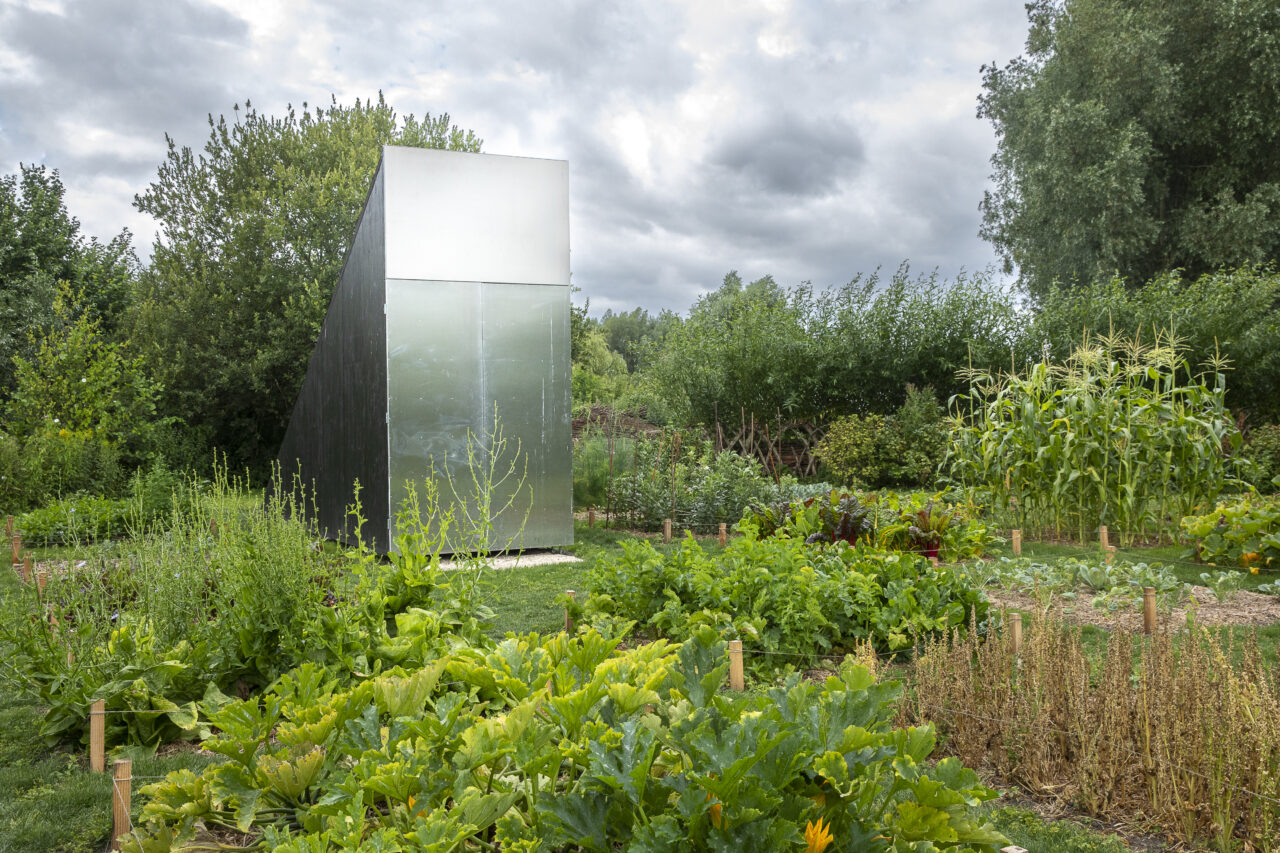Maison de Graines is a structure built in the middle of a vegetable garden that serves as a seed library (seed bank): a space where seeds are collected, preserved, collected, exchanged, and distributed. At the same time, the pavilion serves as a cabin for the gardener. The construction has a very recognizable appearance: the triangle is a nod to the famous Spitsbergen seed vault, a world reserve of seeds (Svalbard, Norway), where a huge collection of agricultural seeds from around the world can be found.
The front facade of the pavilion features a double door and at the back, a large window allows the pavilion to be opened even when it is closed: the window provides a connection from the inside to the outside and vice versa. The cabinets inside provide space for the seed library. Two cabinets facing outward contain the gardener’s tools. The black tint of the wood serves as a backdrop for the plants.
The vegetable garden plan is as simple as the bottom of the vegetable boxes and baskets used by farmers: about thirty four-square-meter squares (4 m2) are arranged at a 45-degree angle on the site. The varieties of vegetables planted (one different species in each square) have been carefully selected in collaboration with Francis Parmentier, a hortillon from Amiens from generation to generation. It is thanks to his experience that one can find species at different stages: young… flowering… seed-bearing…
This project is intended to be seen as a symbol for the preservation and development of the Hortillonnages site. Apprentice gardeners who want to harvest and preserve their own seeds must know that moisture is the worst factor for preservation!
The artist
(Français) Pioniersplanters


